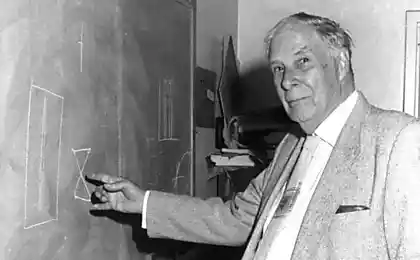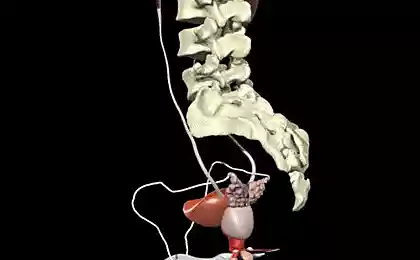176
How to use your alter ego to overcome fears and doubts

Each of us faces the inner demons of fear and doubt at times. They undermine our confidence, stop us from achieving and prevent us from reaching our true potential. But what if there is a powerful psychological tool to switch between normal state and maximum confidence mode? This is the opportunity offered by the concept of the alter ego, the inner self-image that embodies the qualities we lack in everyday life.
Your alter ego is not a fictional character or fantasy. It is you, but without the constraints that put fear, doubt, and social convention on you. It is a version of you with boundless confidence, courage and determination.
Psychological foundations of the concept of alter ego
The concept of alter ego has deep roots in psychology and is associated with the ideas of famous psychologists about the plurality of personality. Carl Jung spoke of the persona, the social mask we wear, and the shadow, the hidden part of our personality. Creating an alter ego is not an escape from reality, but rather a psychological device to access the hidden resources of our consciousness.
Research in neuropsychology shows that when we assume a different role or imagine ourselves as the ideal version of ourselves, other neural pathways are activated in the brain. This can help us bypass established thought patterns associated with anxiety and self-criticism.
The greatest discovery of my generation is that man can change his life by changing his attitude.
Many successful people have used the concept of alter ego to achieve outstanding results. Beyonce is known to have created her alter ego "Sasha Fiers" to overcome stage shyness. Professional athletes often create alter egos for competitions to tap into their best qualities in moments of high tension.
How to create an effective alter ego
Creating alter egos is a creative and deeply personal process. It should embody the qualities you need to overcome specific fears and doubts. Here is a step-by-step guide to help you create your own alter ego:
1. Identify your main fears and limitations
Start with an honest analysis of what is stopping you. This can be fear of public speaking, lack of professional skills, social anxiety, or fear of rejection. Write down the specific situations in which these fears are most pronounced.
2. Visualize the perfect version of yourself
Imagine yourself without these limitations. How would you behave? What would they look like? What would they say? What qualities and abilities would you have? It is important to create a detailed and realistic image to which you can refer.
3. Give a name to your alter ego
Assigning a name to your alter ego makes it more specific and accessible. A name may reflect qualities that your alter ego possesses, or have a personal meaning that resonates with you on an emotional level.
4. Identify triggers for “switching”
Create a specific ritual or action that will signal the transition to an alter ego state. It can be a certain pose, a phrase that you say to yourself, or even a physical object, for example, a special accessory that you wear.

Scientific justification of the effectiveness of “switching”
From the point of view of neuroscience, the creation of the ritual of activation of the alter ego involves the principle of conditioned reflex. By repeating a certain action before entering a state of heightened confidence, you create a neural connection that becomes automatic over time. Studies show that even simple changes in body posture can affect stress hormone levels and increase subjective feelings of strength.
Practical methods of integrating alter egos into everyday life
It is not enough to create an alter ego; you need to learn how to use it effectively in real situations. Here are some proven methods:
Immersion method
Start by activating alter egos in safe, low-stress situations. For example, if your alter ego helps overcome social anxiety, try it first in a short conversation with a salesperson in a store before using it in important meetings or public appearances.
Internal dialogue techniques
Establish the practice of regular “talking” with your alter ego. Ask them: “What would you do in this situation?”, “What would you say to this person?” Write down the answers that come to you – they may contain unexpected insights and solutions.
Visualization before difficult situations
Before facing a fear-inducing situation, spend 5-10 minutes in meditation visualization. Imagine how your alter ego successfully copes with this situation, paying attention to the details: posture, tone of voice, internal state.
One of the most effective ways of consolidating new patterns of behavior is practice in real conditions. Choose situations that cause you moderate discomfort, and consciously turn on your alter ego. After each such experience, analyze what worked and what can be improved.
Real stories of transformation through alter ego
The story of Marina, a 34-year-old marketer, vividly illustrates the power of alter egos. Experiencing intense anxiety before public speaking, she created an alter ego, Diana, a confident professional who loves attention and easily retains the audience. Before each performance, Marina spent five minutes in the bathroom, taking a "power posture" and mentally switching to Diana's state. After three months of this practice, the fear of performing significantly decreased, and some elements of Diana's behavior were integrated into Marina's everyday personality.
Another example is Alexander, an aspiring entrepreneur who created an alter ego called Maxim to conduct complex negotiations and find investors. Maxim was the epitome of charisma, strategic thinking and unwavering confidence in its project. Using this alter ego, Alexander managed to attract the first investment in his startup, despite the initial fear of rejection.

Overcoming typical obstacles when working with alter ego
On the way to mastering the alter ego technique, you may encounter several common problems:
The problem of authenticity
Some people worry that using alter egos makes them insincere or fake. It is important to understand that your alter ego is not a mask that hides the real you, but a tool for accessing your hidden resources and potential. Over time, the boundaries between you and your alter ego will blur as its qualities become integrated into your core personality.
Difficulties with switching
At first, entering the alter ego state may seem unnatural or even cause discomfort. It's okay! Any new skill takes time and practice. Start with short-term sessions in a safe environment, gradually increasing their duration and complexity.
Addiction to alter ego
There is a risk of over-reliance on the alter ego when a person can only function in this state. Therefore, it is important to consider the alter ego as a temporary tool for developing qualities that should then become part of your whole personality.
Integration: When the alter ego becomes part of you
The ultimate goal of working with the alter ego is not to live a double life, but to integrate its strong qualities into your everyday personality. Psychologists call this process the assimilation of subpersonalities, and it is a sign of healthy psychological development.
You will notice that integration occurs when:
- Switching to alter ego mode becomes more natural and requires less conscious effort.
- The qualities of your alter ego begin to manifest in situations in which you have not consciously activated it.
- The difference between your normal behavior and your alter ego behavior gradually decreases.
- You begin to think of your alter ego not as “another person,” but as a part of yourself.
Integration can be accelerated through regular reflection. Keep a diary in which you record your experience of using alter egos: what worked, how you felt, what qualities you would like to transfer to your daily life. This practice helps to consciously form new neural connections that consolidate the desired patterns of behavior.
Conclusion: From alter ego to authentic power
The alter ego technique is not just a psychological trick, but a powerful tool for personality transformation. By creating and using an alter ego, you do not run away from reality, but, on the contrary, access the deep resources of your psyche, which have been blocked by fears and doubts.
Remember, your alter ego is not someone else. It is you, but without self-restraint. It is a version of you, free from the historical baggage of failure and disappointment. By using this tool, you are gradually unleashing your true potential and becoming a more holistic, confident and authentic person.
Don’t be afraid to experiment with this technique and adapt it to your unique needs and situations. Perhaps the alter ego will be the bridge that will take you to the next level of personal growth and help you turn your wildest dreams into reality.
Learn more about psychological techniques
Glossary of terms
Alter ego
A person’s second self; an alternate personality or identity that reflects hidden or repressed aspects of the underlying personality. In psychology and practice, personal growth is a consciously constructed inner image of oneself with desired qualities.
Neuroplasticity
The ability of the brain to change its structure and functional organization in response to new experiences, learning, or trauma. Underlies the possibility of forming new neural connections using the technique of alter ego.
Cognitive restructuring
A psychotherapeutic technique aimed at identifying and changing negative or distorted thinking patterns. The use of alter egos can be seen as a form of cognitive restructuring.
Integration of subpersonalities
The process of combining different aspects of the personality into a more holistic structure. In the context of working with the alter ego - the inclusion of its positive qualities in the main personality.
Psychological anchor
A stimulus that causes a certain psychological or emotional state. In the technique of alter ego, the anchor is the ritual of “switching” that triggers the desired state of confidence.
Embodiment
A concept in psychology that indicates that our thinking and emotions are inextricably linked to the physical body. Changes in posture, facial expression, and other aspects of physiology can affect the psychological state.
How to know if someone really loves you. 5 Non-Obvious Signs
Why do men leave? Mistakes of women nobody talks about. .























